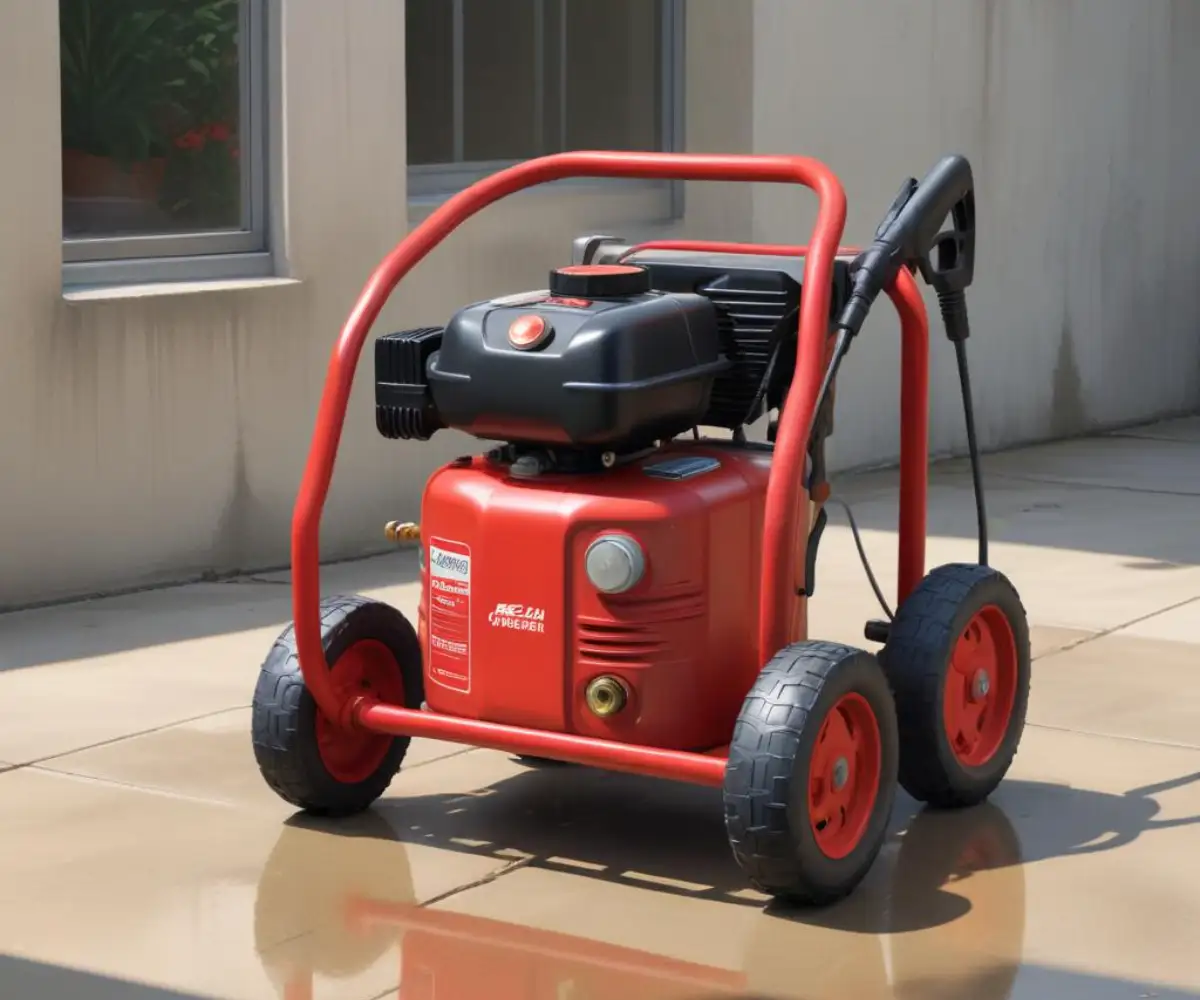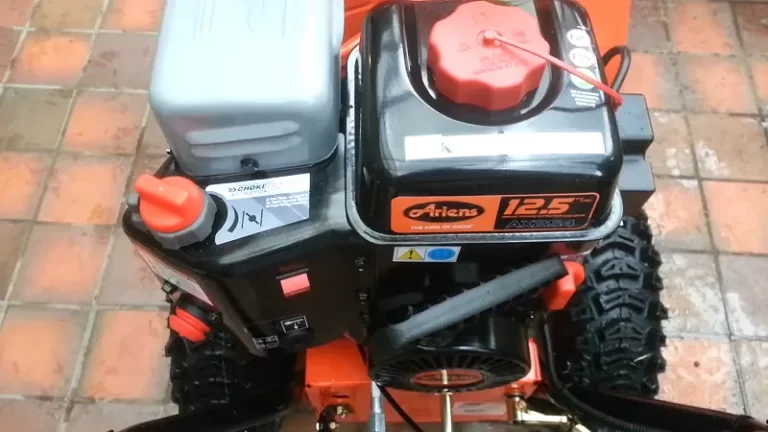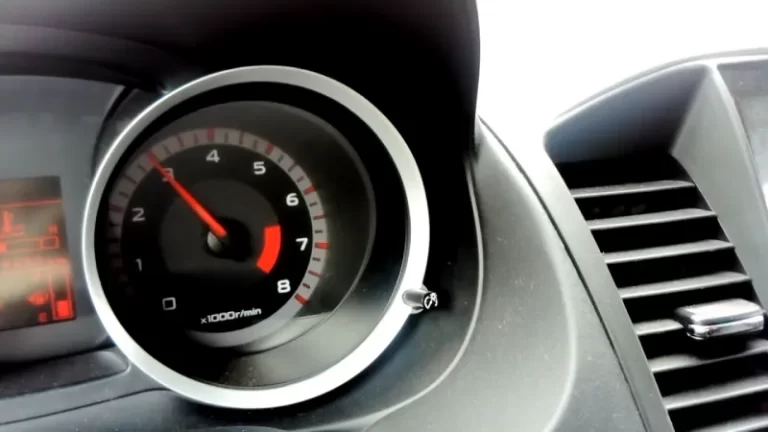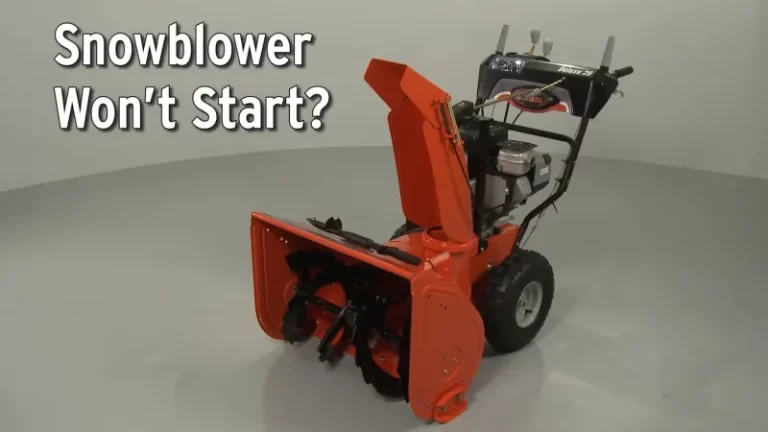E10 Gas in Your Pressure Washer? The Critical Mistake You Must Avoid
You’re geared up for a major outdoor cleaning project. The deck is cleared, the siding is ready for a refresh, and your trusty pressure washer is waiting. You reach for the nearest gas can, the same one you use for your lawnmower, filled with standard E10 gasoline. A fleeting thought crosses your mind: is E10 gas safe for my pressure washer?
This single, seemingly innocent decision can be the difference between a smoothly running machine and a costly, frustrating repair bill. Using the wrong fuel is one of the most common and damaging mistakes owners make. This guide will provide a definitive answer and equip you with the knowledge to protect your valuable equipment for years to come.
You'll Learn About
What Exactly is E10 Gas, and Why Is It a Threat to Small Engines?
E10 gasoline is the standard fuel available at most pumps today. It consists of 90% gasoline and 10% ethanol. While this blend works fine for most modern cars, it poses a significant threat to the small engines that power equipment like pressure washers, lawnmowers, and chainsaws.
The core of the problem lies with the ethanol. Ethanol is “hygroscopic,” which means it actively absorbs moisture from the surrounding air. This single property triggers a cascade of potential issues inside your pressure washer’s fuel system.
The Corrosive Power of Water and Ethanol
As ethanol pulls water from the air into your fuel tank, it can lead to a phenomenon called “phase separation.” This is where the water and ethanol mixture becomes heavier than the gasoline and sinks to the bottom of the tank. The fuel pickup line then sucks in this corrosive, water-heavy sludge instead of pure fuel.
This corrosive mixture is incredibly damaging. It can eat away at the rubber and plastic components in your fuel lines, gaskets, and seals, causing them to become brittle, crack, and leak. It also causes rust and corrosion on metal parts, particularly within the carburetor.
The Carburetor Catastrophe: E10’s Number One Victim
The carburetor is the heart of your pressure washer’s engine, and it is exceptionally vulnerable to the effects of E10 gas. A carburetor is a finely tuned component with incredibly small passages and jets that deliver a precise air/fuel mixture to the engine. When the corrosive sludge created by ethanol and water enters the carburetor, it’s a recipe for disaster.
Ethanol also acts as a powerful solvent. It can loosen old varnish and gum deposits from the fuel tank, which then travel through the fuel lines and clog these tiny carburetor jets. The result is a starved engine that will struggle to start, run roughly, or fail to run at all.
Warning Signs: How to Tell if Your Pressure Washer Hates E10 Gas
If you’ve been using E10 gas, you might already be noticing the symptoms of fuel system damage. Recognizing these signs early can save you from a complete engine failure. Much like how a strange high-pitched-noise-coming-from-ceiling is an immediate alert that something is wrong in your home, these engine symptoms are a clear cry for help.
Common symptoms of ethanol damage include:
- Difficulty Starting: The engine cranks but refuses to turn over, or requires many pulls to start.
- Rough Idling or Stalling: The engine sputters, runs unevenly, or dies completely when not under load.
- Loss of Power: The pressure washer feels weaker than usual and struggles to produce a strong stream.
- Engine Surging: The engine’s RPMs fluctuate up and down erratically.
- Visible Component Damage: You might notice cracked or swollen fuel lines upon inspection.
The Ultimate Fuel Guide for Peak Pressure Washer Performance
Protecting your pressure washer starts with using the right fuel. The choices you make at the pump and before storage will directly impact the longevity and reliability of your machine. Proper fuel management is as foundational to equipment health as Sentinel Foam Board installation is to a home’s structural integrity—it prevents serious problems down the line.
The Gold Standard: Ethanol-Free Gasoline
The absolute best fuel for your pressure washer is ethanol-free, 87 octane (or higher) unleaded gasoline. This fuel eliminates all the problems associated with ethanol. Without ethanol, there’s no moisture absorption, no phase separation, and a significantly lower risk of corrosion and clogged carburetors.
Ethanol-free gas, sometimes called “rec fuel” or “marine gas,” can often be found at marinas, some gas stations (especially in rural areas), and home improvement stores in pre-packaged cans. While it costs more per gallon, the expense is a small price to pay to avoid a $100+ carburetor repair.
When E10 is Your Only Option: Damage Control 101
We understand that finding ethanol-free gas isn’t always possible. If you must use E10, you can take defensive measures to mitigate the potential damage. The most crucial step is to use a high-quality fuel stabilizer every single time you fill your gas can.
A good fuel stabilizer works by preventing the fuel from degrading and stopping phase separation from occurring. It creates a protective layer that keeps the fuel fresh and the system clean. Always add the stabilizer to your gas can before you fill it to ensure it mixes thoroughly.
Additionally, only use fresh gasoline—fuel that is less than 30 days old. Old gasoline loses its combustibility and is more likely to have absorbed moisture, even with a stabilizer present.
Fuel Type Comparison
Choosing the right fuel can be confusing. This table breaks down the pros and cons of the most common options to help you make the best decision for your pressure washer.
| Fuel Type | Key Characteristic | Pros | Cons | Best For |
|---|---|---|---|---|
| Standard E10 (87 Octane) | Contains up to 10% ethanol | Widely available, inexpensive | Absorbs water, corrosive, short shelf life (under 30 days) | Not Recommended; Use only as a last resort with stabilizer |
| E10 with Fuel Stabilizer | E10 treated with an additive | Mitigates some ethanol damage, extends shelf life | Still contains corrosive ethanol, requires consistent use | Situations where ethanol-free gas is unavailable |
| Ethanol-Free Gasoline (Rec-90) | 0% ethanol content | No water absorption, stable for storage, best for engine health | More expensive, harder to find at standard pumps | Highly Recommended; The best choice for all small engines |
| Pre-Packaged Engineered Fuel | Ethanol-free fuel with stabilizer and synthetic oils | Extremely long shelf life (up to 5 years), ultimate engine protection | Very expensive, sold in small quantities | Long-term storage, occasional users, guaranteed performance |
Help! I Already Used E10 Gas. What’s the Fix?
If your pressure washer is already running poorly after a season of using E10 gas, don’t panic. In many cases, you can reverse the damage with a thorough fuel system cleaning. This is a crucial step before tackling bigger projects, just as you’d need to know how to remove granite countertops without damaging cabinets before starting a kitchen remodel.
Follow these steps to attempt a recovery:
- Safely Drain All Fuel: The first and most important step is to completely drain the old, contaminated fuel from the gas tank and the carburetor bowl. Dispose of the old gas according to your local regulations.
- Inspect the Fuel Lines: Carefully check all rubber fuel lines for signs of cracking, hardening, or swelling. If they feel brittle or mushy, they must be replaced.
- Clean the Carburetor: This is often the most critical part of the fix. You will need to remove the carburetor from the engine. Carefully disassemble it, paying close attention to the float bowl, jets, and needle. Spray all components and passages with a dedicated carburetor cleaner to dissolve the varnish and white, crusty deposits left by ethanol.
- Reassemble and Refill: Once everything is clean and dry, reassemble the carburetor and install it back on the engine. Refill the tank with fresh, ethanol-free gasoline.

If the engine still won’t run smoothly after these steps, the carburetor may be permanently damaged and require a full replacement. Fortunately, carburetors for most pressure washer engines are relatively inexpensive and easy to install.
The Critical Importance of Long-Term Storage
The single most destructive period for a pressure washer’s fuel system is during off-season storage. When left to sit for months with untreated E10 gas, the fuel will inevitably go stale, absorb water, and wreak havoc on the carburetor. Proper storage procedure is non-negotiable.
You have two primary methods for safe long-term storage:
- Method 1 (Best): Run the Engine Dry. This is the most foolproof method. Add fuel stabilizer to the remaining fuel in the tank, then run the engine until it stops from lack of fuel. This ensures the tank, fuel lines, and, most importantly, the carburetor are completely empty, leaving nothing behind to degrade.
- Method 2 (Good): Use Stabilized Fuel. If you cannot run the engine dry, fill the tank almost to the top with fresh, ethanol-free gasoline treated with a quality fuel stabilizer. Running the engine for a few minutes will circulate this protected fuel through the entire system, preventing corrosion during storage.
The Final Verdict: Your Pressure Washer’s Lifespan Is in Your Hands
The message is clear: avoid using E10 gasoline in your pressure washer whenever possible. The convenience of using pump gas is not worth the risk of gummed-up carburetors, corroded fuel lines, and frustrating engine problems. Your pressure washer is a powerful and expensive tool, and its engine deserves the clean, stable fuel it was designed for.
By making the switch to ethanol-free gasoline and practicing proper fuel management and storage techniques, you are investing in the health and longevity of your equipment. A little extra effort today will save you a great deal of money and frustration, ensuring your pressure washer starts easily and runs strong for every project, season after season.



